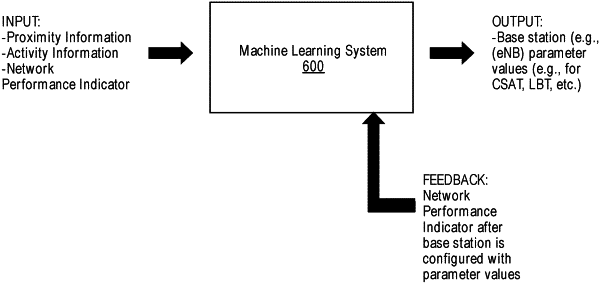| CPC H04W 16/14 (2013.01) [H04L 43/12 (2013.01); H04W 16/18 (2013.01); H04W 24/02 (2013.01); H04W 24/08 (2013.01); H04W 72/082 (2013.01); H04W 74/0816 (2013.01); H04W 88/10 (2013.01)] | 20 Claims |

|
1. A method implemented by one or more network devices for determining parameter values for a base station of a cellular network, where the base station operates in a wireless band that is shared with one or more wireless access points, where the parameter values are determined to optimize network performance in a manner that allows for fair coexistence between the base station and the one or more wireless access points, the method comprising:
obtaining proximity information for the one or more wireless access points relative to the base station;
obtaining activity information for the one or more wireless access points;
determining, using a machine learning system, parameter values for the base station based on the proximity information and the activity information; causing the base station to be configured with the parameter values;
obtaining a first network performance indicator, wherein the first network performance indicator indicates a level of network performance before the base station was configured with the parameter values;
obtaining a second network performance indicator, wherein the second network performance indicator indicates a level of network performance after the base station was configured with the parameter values;
determining a measure of how configuring the base station with the parameter values affected network performance based on comparing the first network performance indicator and the second network performance indicator; and
training the machine learning system using the measure of how configuring the base station with the parameter values affected network performance.
|